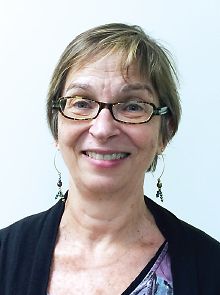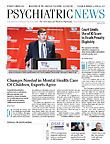The enhanced developmental focus of DSM-5 can assist in the education of child and adolescent psychiatrists by supporting a renewed emphasis on using diagnostic criteria in conjunction with information on development and context to assess “the whole child.”
So says Arden Dingle, M.D., director of child and adolescent psychiatry at Emory University, in an article in the February Academic Psychiatry titled, “The DSM-5: An Opportunity to Affirm `The Whole Child’ Concept in Child and Adolescent Psychiatric Residency Training.”
In the article, she says that in conjunction with an evaluation of developmental and environmental characteristics, the DSM-5 classification provides a framework to describe and conceptualize the emotional and behavioral issues of children and adolescents that can inform and guide treatment. The article was one of six published by the journal to examine the educational implications of the new diagnostic manual for the training of medical students, residents, and fellows.
“The DSM-5 emphasizes development in the organization of the manual, categorization of the disorders, and the description of diagnostic criteria,” Dingle pointed out. “Additionally, the manual’s discussion of the dimensional aspects of psychopathology more closely matches how development is conceptualized and understood, making it easier to apply both in clinical situations. Implementing the DSM-5 provides an opportunity to examine and support strategies to teach and include development as a key element in child and adolescent psychiatry [CAP] education and practice. For example, a true understanding of development and its interface with psychopathology requires exposure to and interaction with typical children and adolescents in their usual environments, such as daycare, schools, and recreational programs to understand individual and group behavior as well as societal and cultural expectations for youth. The DSM has the potential to be a strong justification for providing these types of activities in CAP residency training.”
Developmental Perspective Is Valuable
In comments to Psychiatric News, Dingle said that she believes the developmental perspective of the new manual can help to correct some contemporary tendencies in practice and teaching. “I think as we have learned more about the biology of psychiatric illness in children, had more choices in terms of psychopharmacological treatment, developed more standardized approaches to assessment and treatment, and become more ‘doctor-like’ in our behavior, we have tended to increasingly emphasize the identification and documentation of symptoms as the main activity of CAP and that other people collect information about other aspects of the child and data about the child’s life and environment, if it is collected at all,” she said.
“But I don’t think we can understand children and their issues if we do not know about their environment, interactions with others, and general psychology,” she added. “And I think a number of practitioners have responded to financial and other pressures by trying to diagnose a child in a time-limited session as opposed to spending enough time up front to try and have a reasonable idea or picture of the child and the child’s life.
“While the DSM diagnostic system is useful and necessary, without knowing the details of a child’s life and circumstances, I don’t think it is possible to make an adequate diagnosis and treatment plan,” she told Psychiatric News. “Knowing that a child has ADHD does not tell one enough to develop and implement good treatment.”
Dingle believes the new version is more developmentally oriented, in terms of the organization of the manual and the information included. “It is a clearer expression that most psychiatric illnesses occur across the lifespan, and it includes better descriptions of what disorders look like at different ages.”
Teaching Material Likely to Change
Additionally, she said that any new version forces teachers to revise their presentations and methods of instuction. “So this becomes an opportunity for educators to reincorporate these aspects of the assessment into the expected or standard approach to evaluation,” she said.
In the run-up to publication, DSM-5 attracted much attention and some concern about changes to certain criteria. But Dingle said the publication of the revised manual provide an important opportunity to teach students and trainees about the evolving knowledge base of neuroscience and psychiatry, as well as the limitations of diagnostic criteria.
In the article, Dingle said that “introduction of the DSM-5 is an opportunity to formally discuss how diagnostic classification systems are conceptualized and developed, their strengths and weaknesses, and how these systems reflect and influence our concepts of psychiatric illnesses and their care. It also can help trainees enhance and refine their knowledge and skills, as well as develop and maintain the ability to be flexible, problem solve, and prioritize in clinical situations.”
In comments to Psychiatric News, she said it is an opportunity for educators themselves to demonstrate that one can be skilled and competent and still need to learn more about developments in their field.
“I generally teach psychopathology using the approach that it is important to understand what the core deficits and problems are for a disorder, how these problems might be demonstrated in children of various ages, and the strengths and limitations of the diagnostic criteria in describing these core issues,” she said. “In this context, it is important to discuss and understand the limitations of diagnostic criteria, especially for high-functioning individuals.” ■
“The
DSM-5: An Opportunity to Endorse the `Whole Child’ Concept in Child and Adolescent Psychiatric Residency Training” can be accessed
here.


